Diversity of Bird Beaks: An Exploration of Adaptations and Functions
Bird beaks show nature’s clever design. These structures help birds survive in many places. Let’s look at 10 amazing types of bird beaks and what they do.
Birds have different beak shapes. Each shape helps the bird eat and live in its own way. Some beaks crack seeds. Others catch fish. And some even make tools.
This article will explore various bird beaks. We’ll see how each type works. You’ll learn about hooked beaks, long thin beaks, and more. Get ready to discover the amazing world of bird beaks.
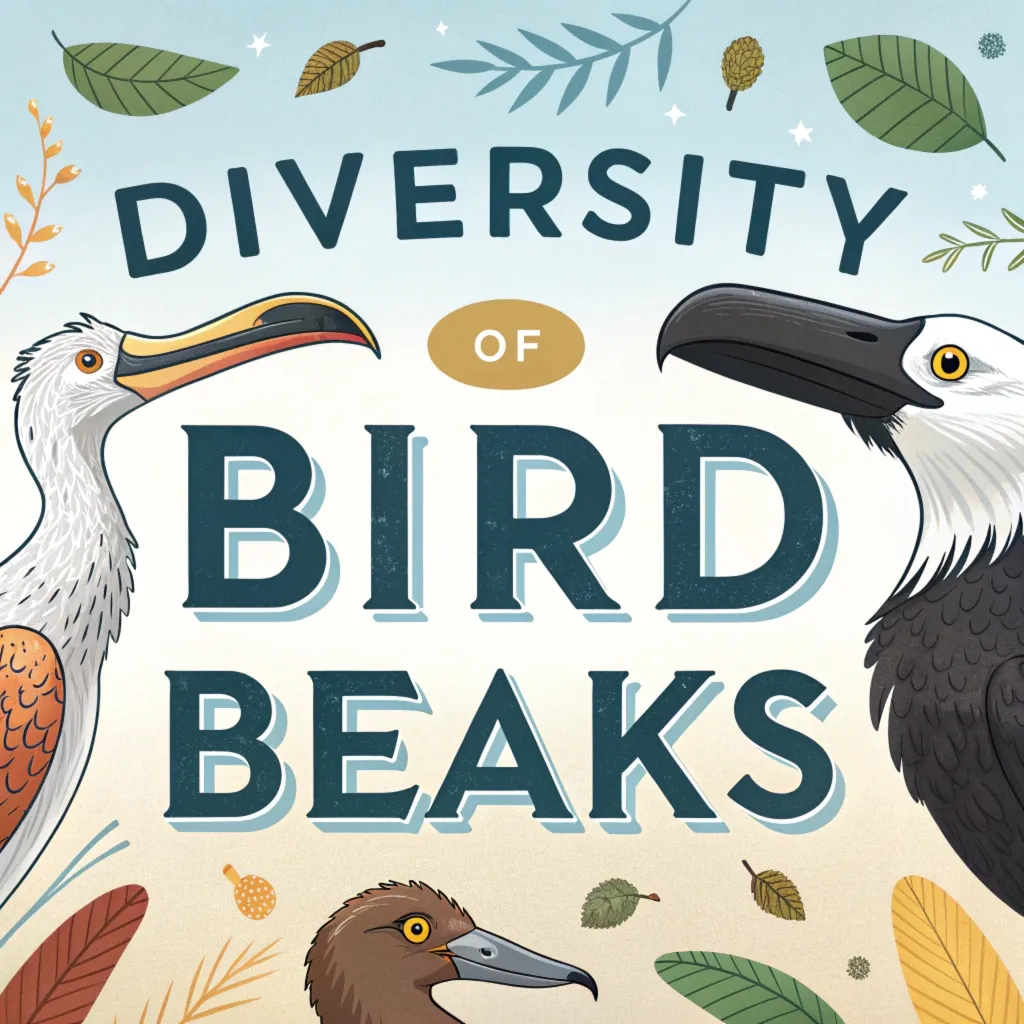
Key Takeaways: The Marvels of Bird Beaks
- Diverse Shapes: Bird beaks come in various shapes, from hooked to conical, each serving a specific purpose.
- Feeding Adaptations: Beaks are primarily adapted for different feeding strategies, such as seed cracking, nectar sipping, or flesh tearing.
- Multifunctional Tools: Beyond feeding, beaks serve in nest building, preening, and social interactions.
- Evolutionary Marvels: Beak shapes reflect evolutionary adaptations to specific ecological niches.
- Survival Mechanisms: The right beak shape can mean the difference between survival and extinction in challenging environments.
- Indicator of Diet: A bird’s beak often provides clues about its preferred food sources and feeding habits.
- Specialized Structures: Some beaks have unique features like filters or pouches for specialized feeding.
- Constant Evolution: Beak shapes can change over time in response to environmental pressures.
- Balancing Act: Beak design balances factors like strength, weight, and functionality.
- Research Subject: Scientists study bird beaks to understand evolutionary processes and adaptations.
1. Hooked Beaks: The Raptors’ Deadly Tools
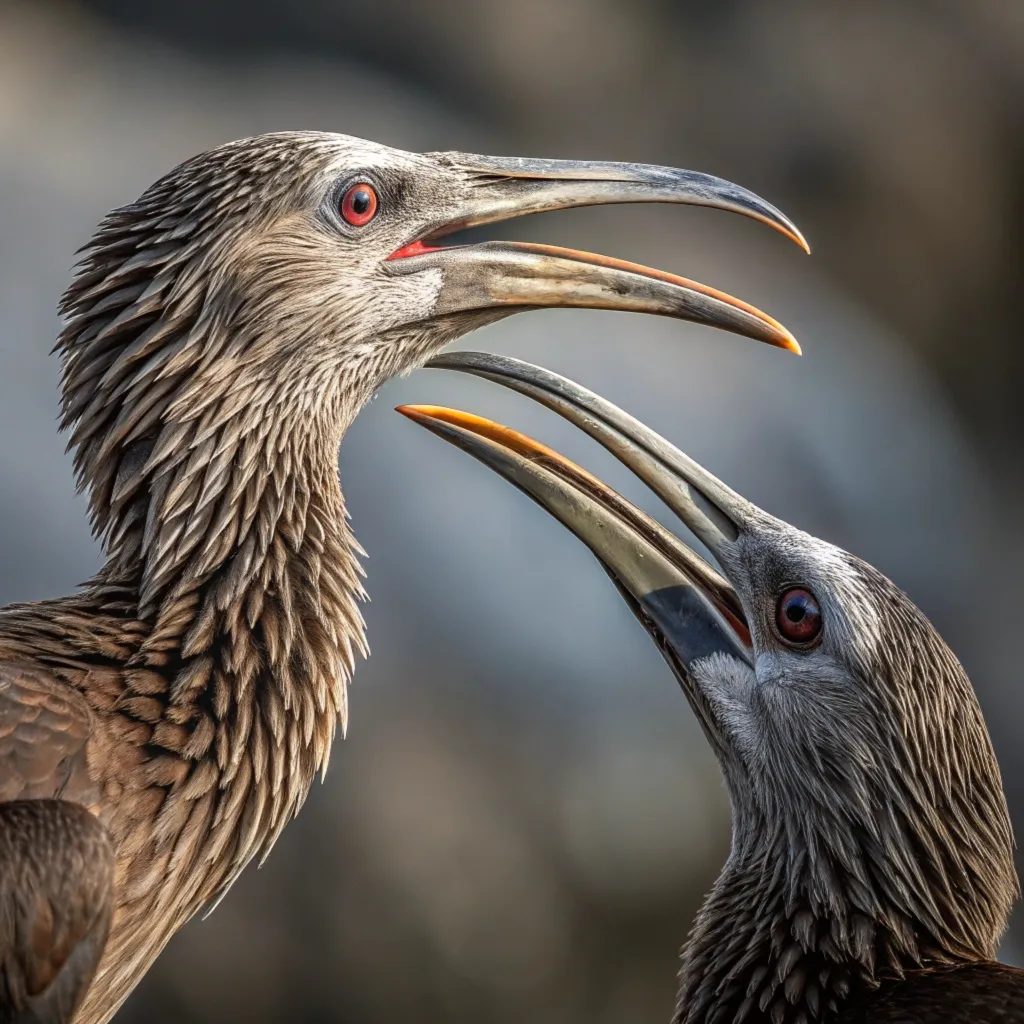
Birds of prey, such as eagles, hawks, and owls, possess hooked beaks. These sharp, curved structures excel at tearing flesh.
The powerful hook allows these birds to grip and rip their prey efficiently. Raptors use their beaks to tear meat into manageable pieces, making it easier to swallow and digest.
The strength of these beaks varies among species. Eagles have particularly robust beaks, capable of tearing through tough hide. Falcons have a special notch in their upper beak called a tomial tooth, which helps them sever the spinal cords of their prey quickly and humanely.
Hooked beaks are not limited to raptors alone. Some seabirds, like frigatebirds and skuas, also possess hooked beaks for catching fish or stealing food from other birds.
These adaptations showcase the versatility of beak shapes in responding to different ecological pressures and feeding strategies.
The evolution of hooked beaks has allowed birds of prey to occupy a crucial ecological niche as top predators in many ecosystems.
2. Conical Beaks: The Seed Crackers
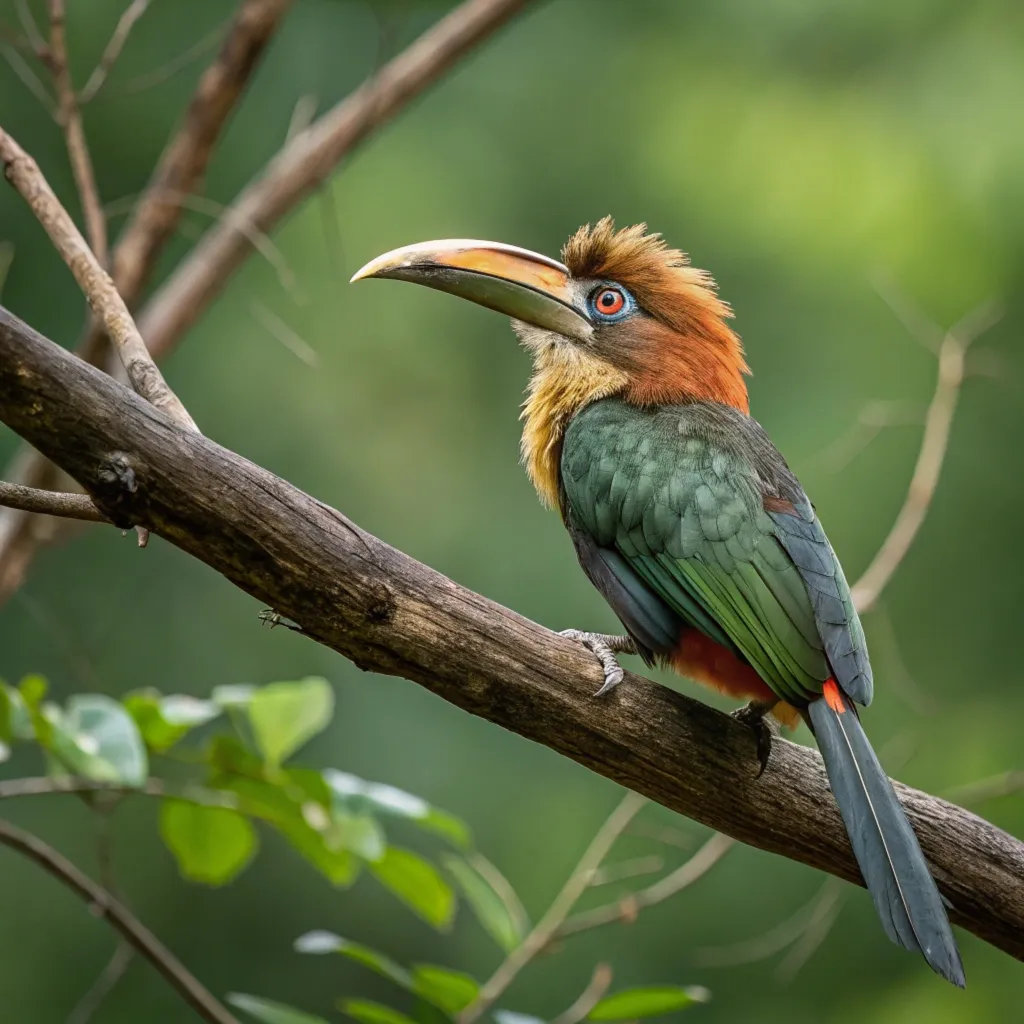
Many small birds, including finches, sparrows, and cardinals, have strong, short conical beaks. These beaks act like pliers, perfectly adapted for cracking open seeds.
The shape allows these birds to exert significant pressure, breaking through hard seed shells to access the nutritious kernels inside.
Darwin’s finches on the Galápagos Islands provide a classic example of beak adaptation. Different species evolved various beak sizes and shapes to exploit different food sources, showcasing the power of natural selection.
Conical beaks are not just limited to seed-eating. Some birds with this beak type, like chickadees and tits, are also adept at catching insects.
This versatility allows them to switch between different food sources depending on availability, enhancing their survival chances in changing environments.
The efficiency of conical beaks in processing seeds has contributed to the success of many bird families, allowing them to thrive in diverse habitats worldwide.
3. Nectar-Sipping Beaks: Nature’s Straws
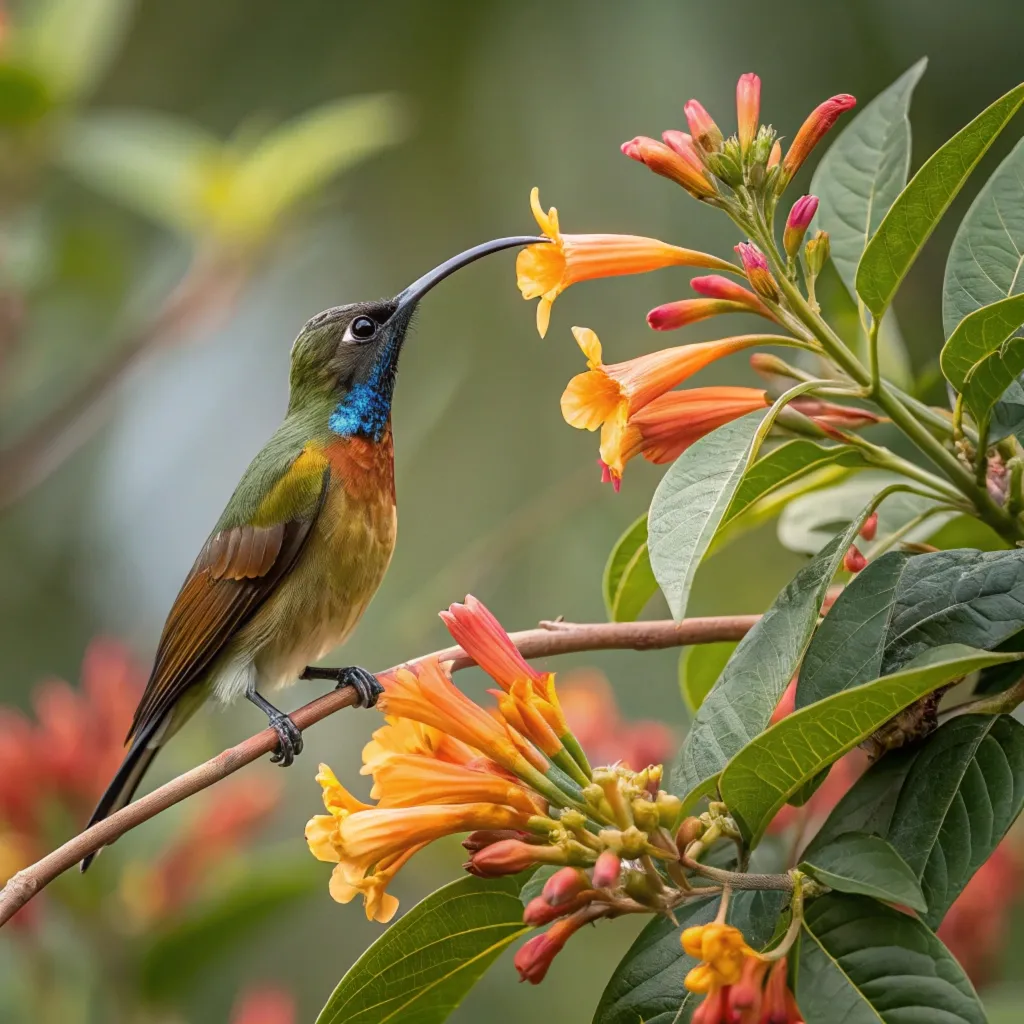
Hummingbirds and sunbirds possess long, thin beaks adapted for sipping nectar from flowers. These beaks often curve slightly, matching the shape of their preferred blossoms.
Inside the beak, their tongues are equally specialized, with tiny grooves that help draw up the nectar through capillary action.
The relationship between these birds and the flowers they feed from is a beautiful example of coevolution. Many flowers have evolved shapes that match their avian pollinators’ beaks, ensuring efficient pollination.
Nectar-sipping beaks are marvels of precision engineering in nature. The long, slender shape allows birds to reach deep into flowers, while the curved design helps them access nectar from various angles.
This specialization has allowed hummingbirds and sunbirds to occupy unique ecological niches, thriving in environments where other birds might struggle.
These beaks also play a crucial role in pollination, making these birds essential components of many ecosystems.
4. Probing Beaks: The Ground Searchers
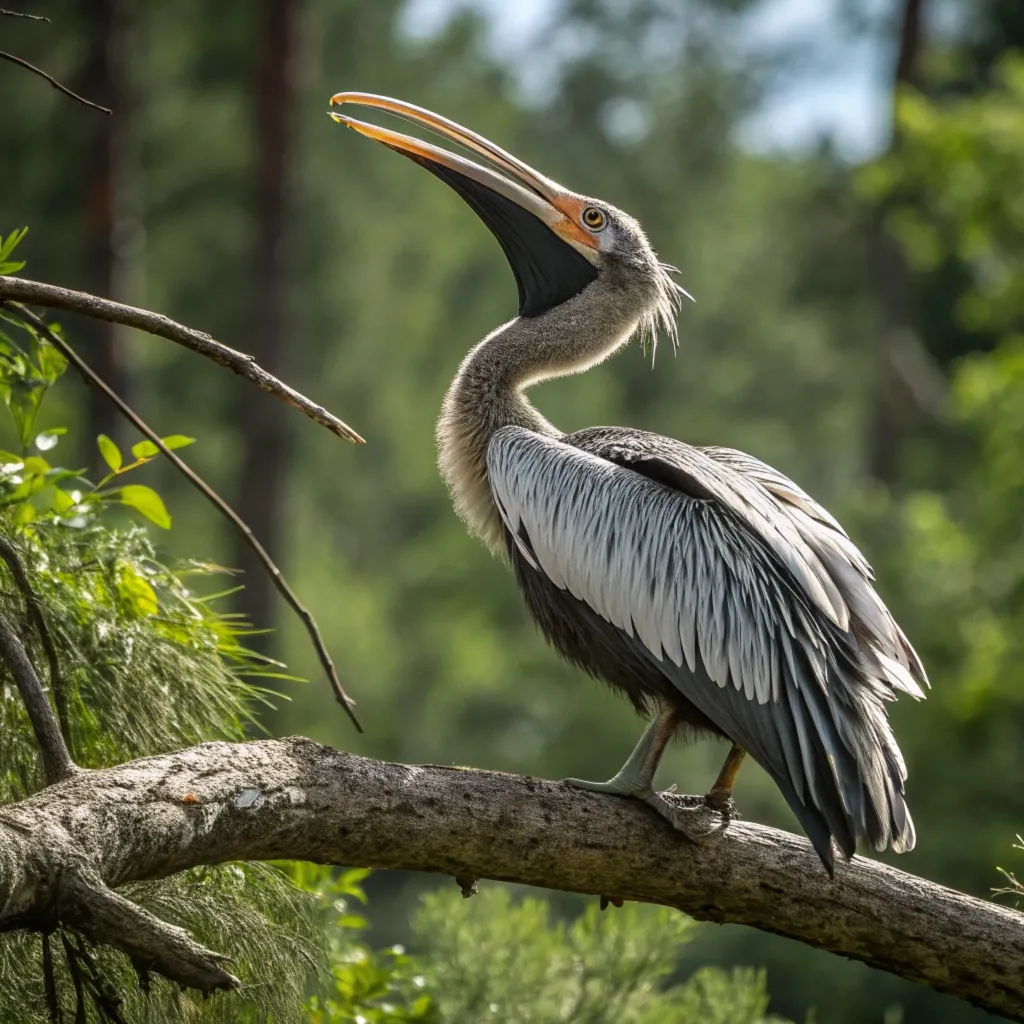
Kiwis, woodcocks, and many shorebirds have long, slender beaks adapted for probing soft soil or mud. These beaks allow birds to search for invertebrates hidden beneath the surface.
Some species, like the kiwi, have sensitive nerve endings at the tip of their beaks to detect prey through touch.
The length and curvature of probing beaks vary among species, reflecting differences in preferred habitats and prey types. Some curlews, for instance, have extremely long, curved beaks for reaching deep into mudflats.
Probing beaks demonstrate the incredible adaptability of birds to different environments. These specialized tools allow birds to access food sources that would be unavailable to other species, reducing competition and enabling them to thrive in specific habitats.
The sensitivity of these beaks also highlights the sophisticated sensory capabilities that have evolved in birds, enhancing their foraging efficiency.
5. Filtering Beaks: The Aquatic Sieve
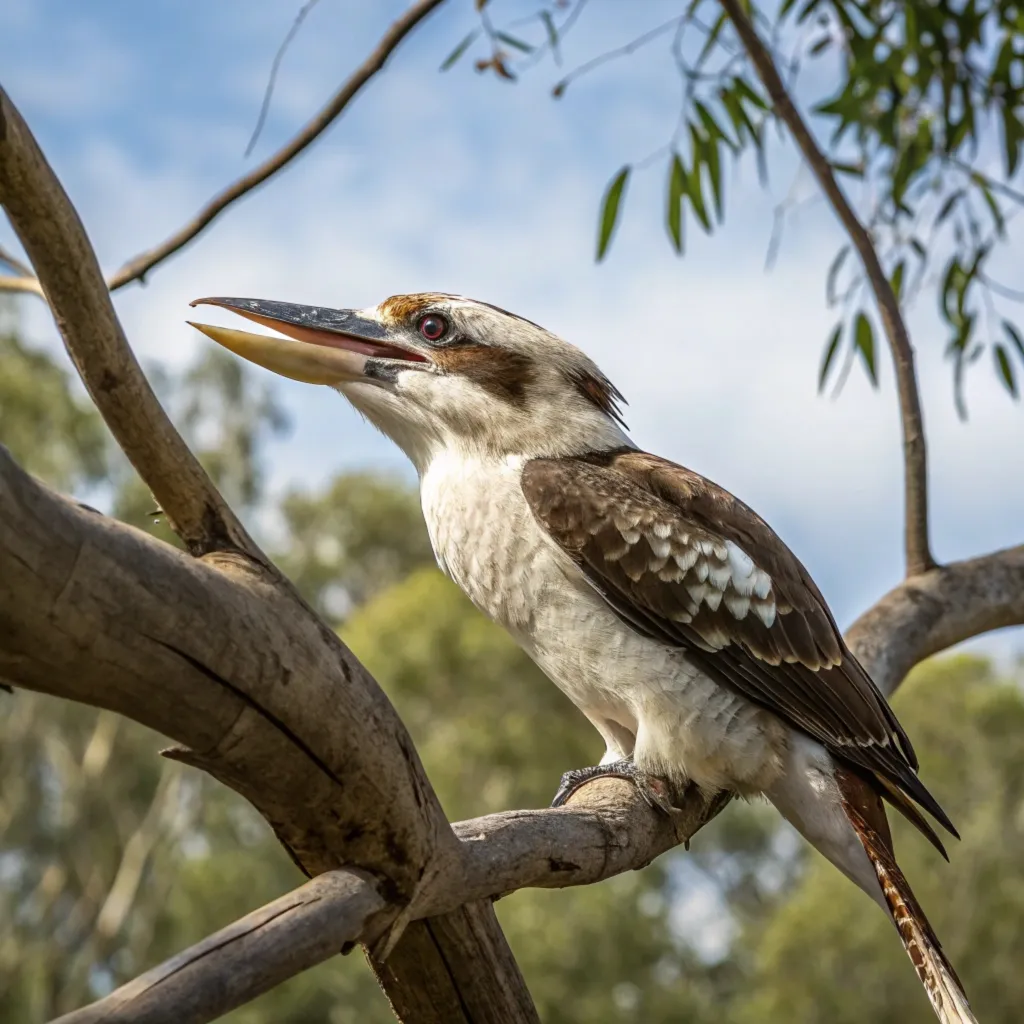
Flamingos, ducks, and some other waterbirds have specialized beaks for filter feeding. These beaks contain lamellae, comb-like structures that strain small organisms and plants from water. Flamingos’ beaks are uniquely adapted, with the upper and lower mandibles reversed compared to other birds.
The filtering mechanism allows these birds to efficiently extract nutrients from water bodies. Flamingos use their beaks to filter algae and small crustaceans, which give them their iconic pink coloration.
Filtering beaks represent a remarkable adaptation to aquatic environments. This specialized feeding mechanism allows birds to exploit food sources that would be inaccessible to other species.
The intricate structure of these beaks, with their fine lamellae, demonstrates the precision of evolutionary adaptations.
These beaks also play a crucial role in maintaining aquatic ecosystems by regulating populations of small organisms and algae.
6. Chiseling Beaks: The Wood Excavators
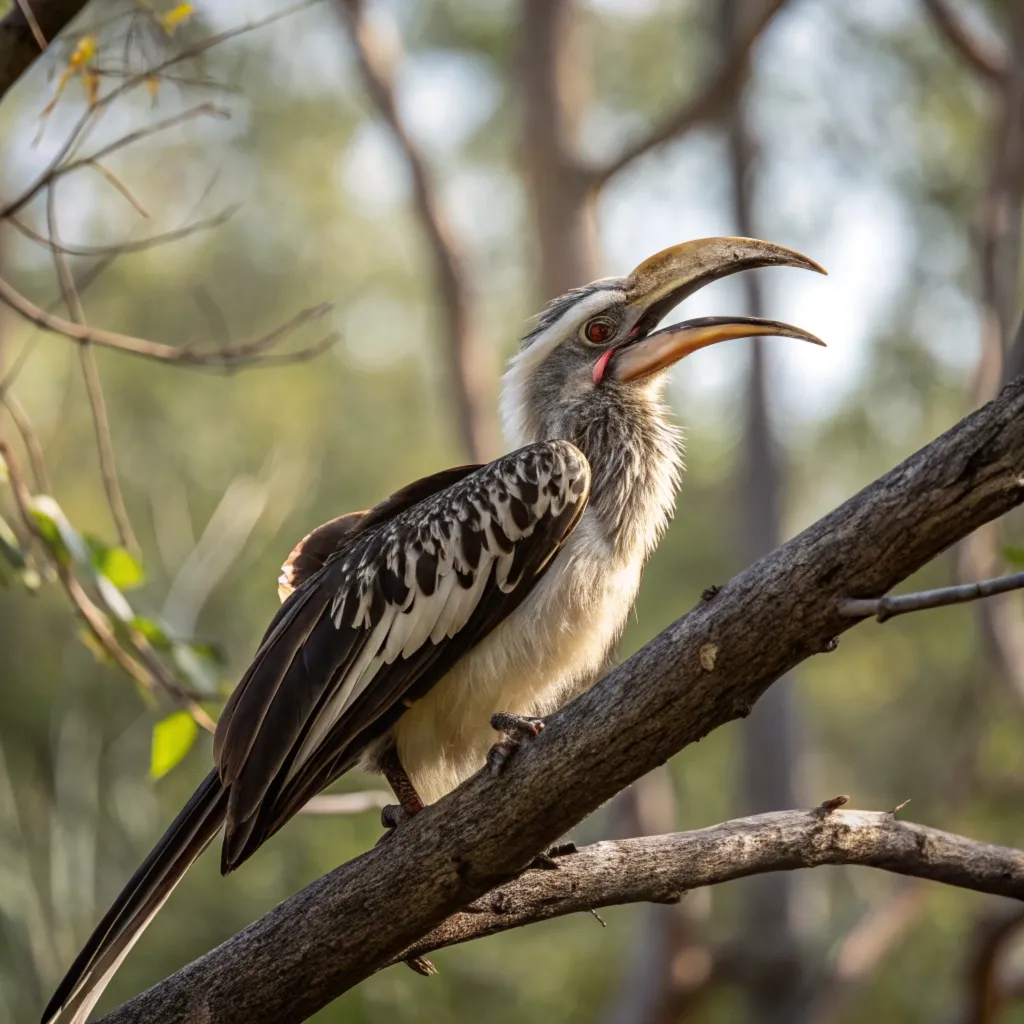
Woodpeckers have strong, chisel-like beaks adapted for drilling into wood. These beaks are reinforced to withstand the impact of repeated hammering. Woodpeckers use their beaks to create nesting cavities and to search for insects hidden in tree bark.
The woodpecker’s beak works in conjunction with other adaptations, including a shock-absorbing skull structure and a long, barbed tongue for extracting insects from the holes they create.
Chiseling beaks are engineering marvels of nature. The reinforced structure allows woodpeckers to withstand incredible forces that would cause brain damage in other animals.
This adaptation has allowed woodpeckers to occupy a unique ecological niche, accessing food sources and creating habitats that are unavailable to other birds.
The woodpecker’s beak also plays a crucial role in forest ecology, creating cavities that are used by many other species for nesting and shelter.
7. Generalist Beaks: The All-Purpose Tools
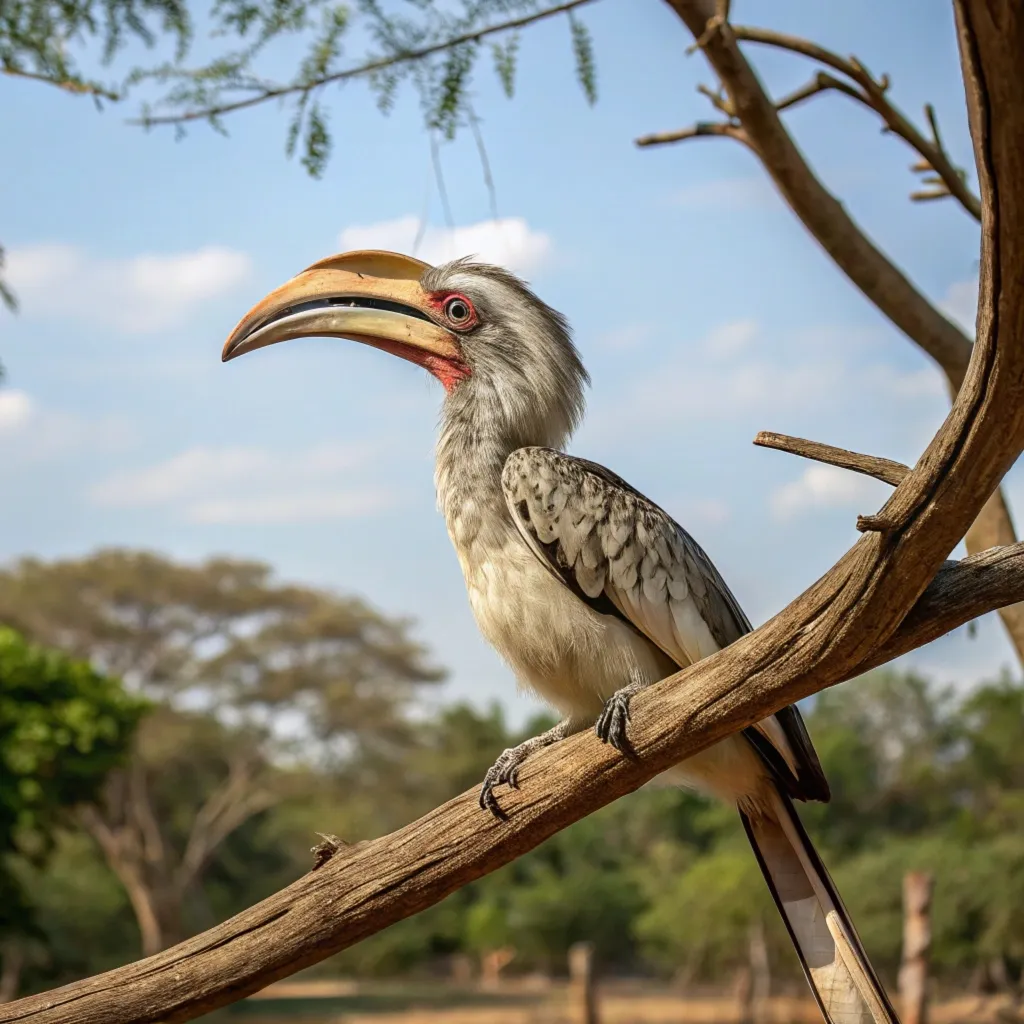
Many birds, such as crows, ravens, and jays, have versatile beaks that can handle a variety of foods. These beaks are typically of medium length and slightly curved, allowing the birds to eat seeds, fruits, insects, and even small vertebrates.
The adaptability of these beaks contributes to these species’ success in diverse habitats, from forests to urban environments. Their beaks’ versatility allows them to exploit a wide range of food sources.
Generalist beaks showcase the power of adaptability in nature. These all-purpose tools have allowed corvids and other generalist species to thrive in a wide range of environments, from pristine wilderness to urban landscapes.
The versatility of these beaks reflects the intelligence and problem-solving abilities of these birds.
This adaptability has contributed to the evolutionary success of many bird families, allowing them to survive and thrive in changing environments.
8. Spear-Fishing Beaks: The Aquatic Hunters
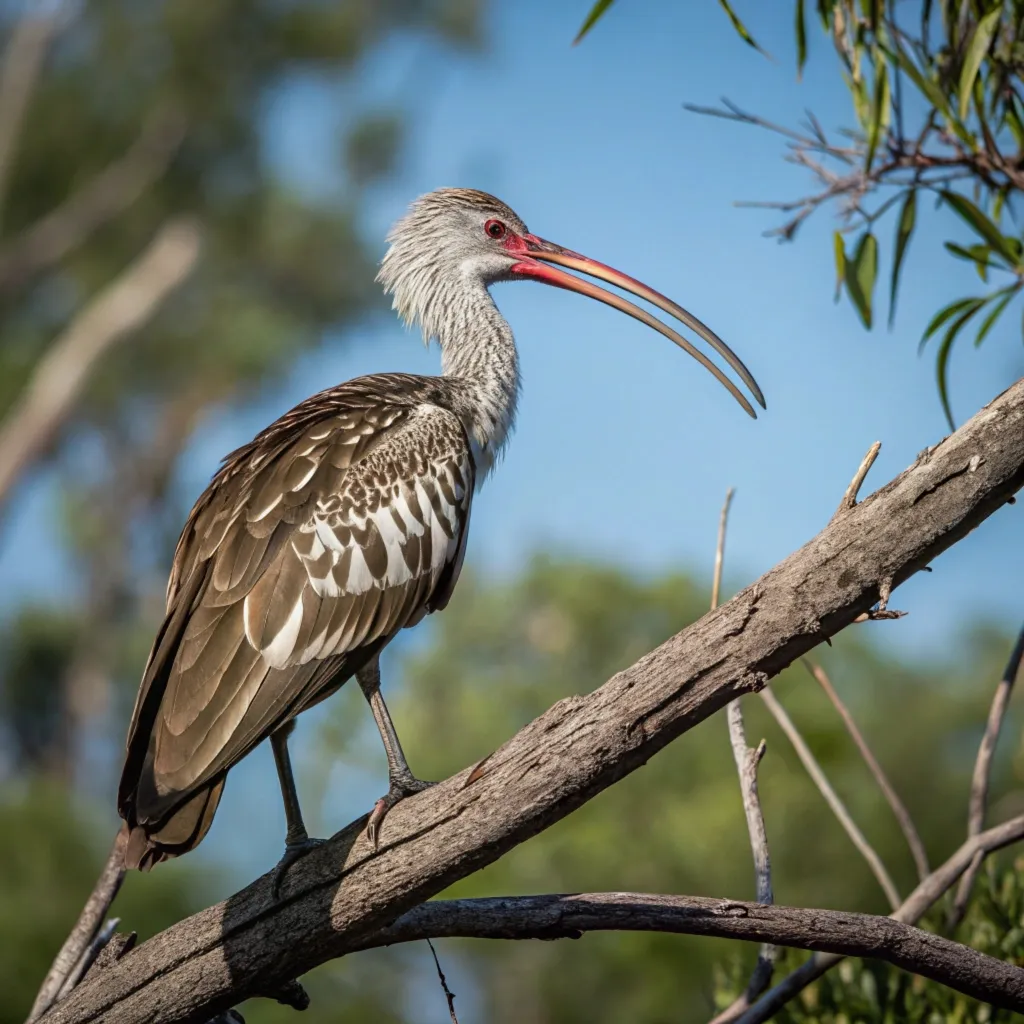
Herons, kingfishers, and terns have long, sharp beaks adapted for catching fish. These beaks act like spears, allowing the birds to strike quickly and precisely at their aquatic prey. The shape minimizes water resistance, enabling efficient hunting.
Some species, like the anhinga, have serrated edges on their beaks to help grip slippery fish. This adaptation showcases the fine-tuned nature of beak evolution in response to specific hunting challenges.
Spear-fishing beaks demonstrate the precision of evolutionary adaptations. The long, sharp shape allows these birds to strike with incredible accuracy, while the streamlined design reduces water resistance. These adaptations have allowed birds to become successful predators in aquatic environments.
The diversity of spear-fishing beak designs among different bird families highlights the various solutions nature has developed for similar ecological challenges.
9. Crossbills: Nature’s Specialized Seed Extractors
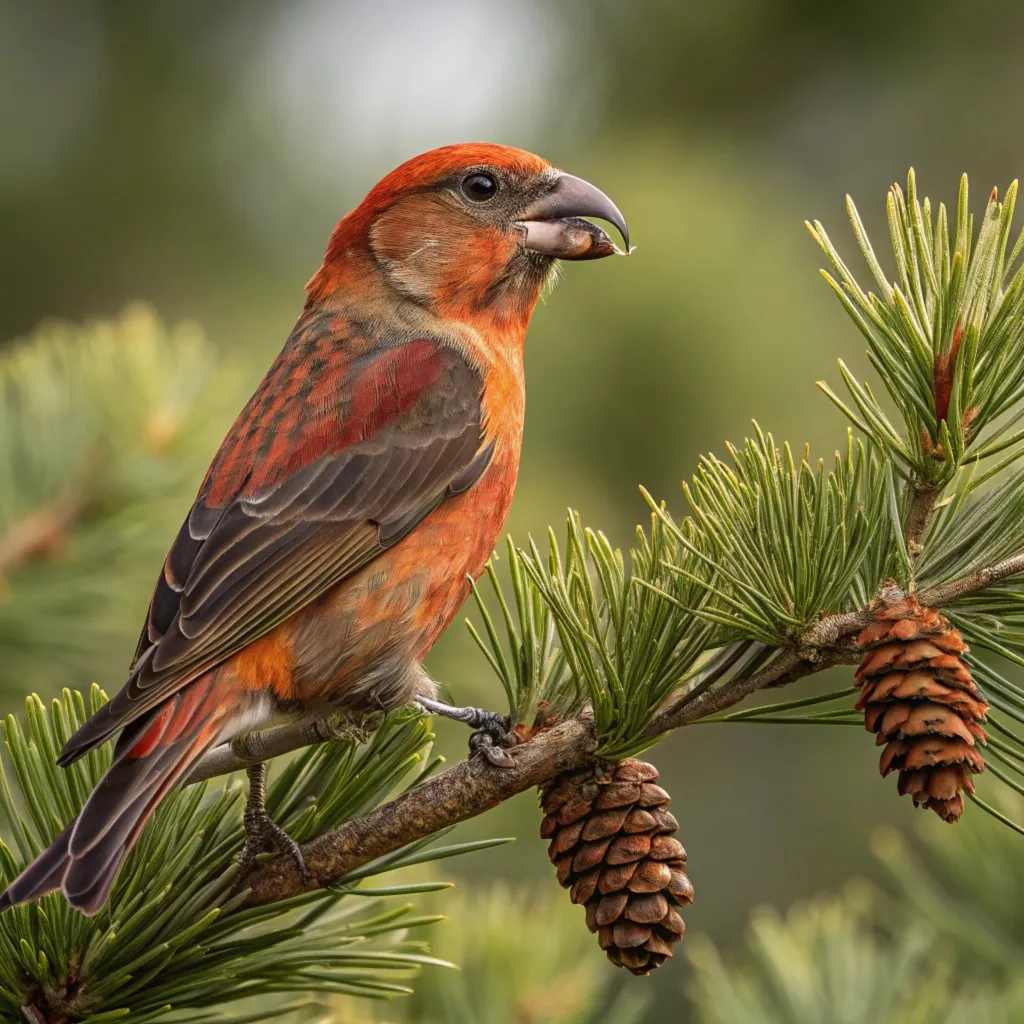
Crossbills have uniquely crossed mandibles, hence their name. This unusual beak shape is perfectly adapted for extracting seeds from pine cones. The crossed tips allow the bird to pry open the cone scales and reach the seeds inside.
Different crossbill species have slightly different beak shapes, each adapted to specific types of conifer cones. This specialization reduces competition between species and allows them to coexist in the same forests.
Crossbills represent one of the most specialized beak adaptations in the bird world. Their unique crossed mandibles allow them to access a food source that is largely unavailable to other birds. This specialization has allowed crossbills to thrive in coniferous forests around the world.
The variation in beak shapes among crossbill species provides a striking example of how subtle differences in morphology can lead to significant ecological divergence.
10. Toolmaking Beaks: The Clever Manipulators
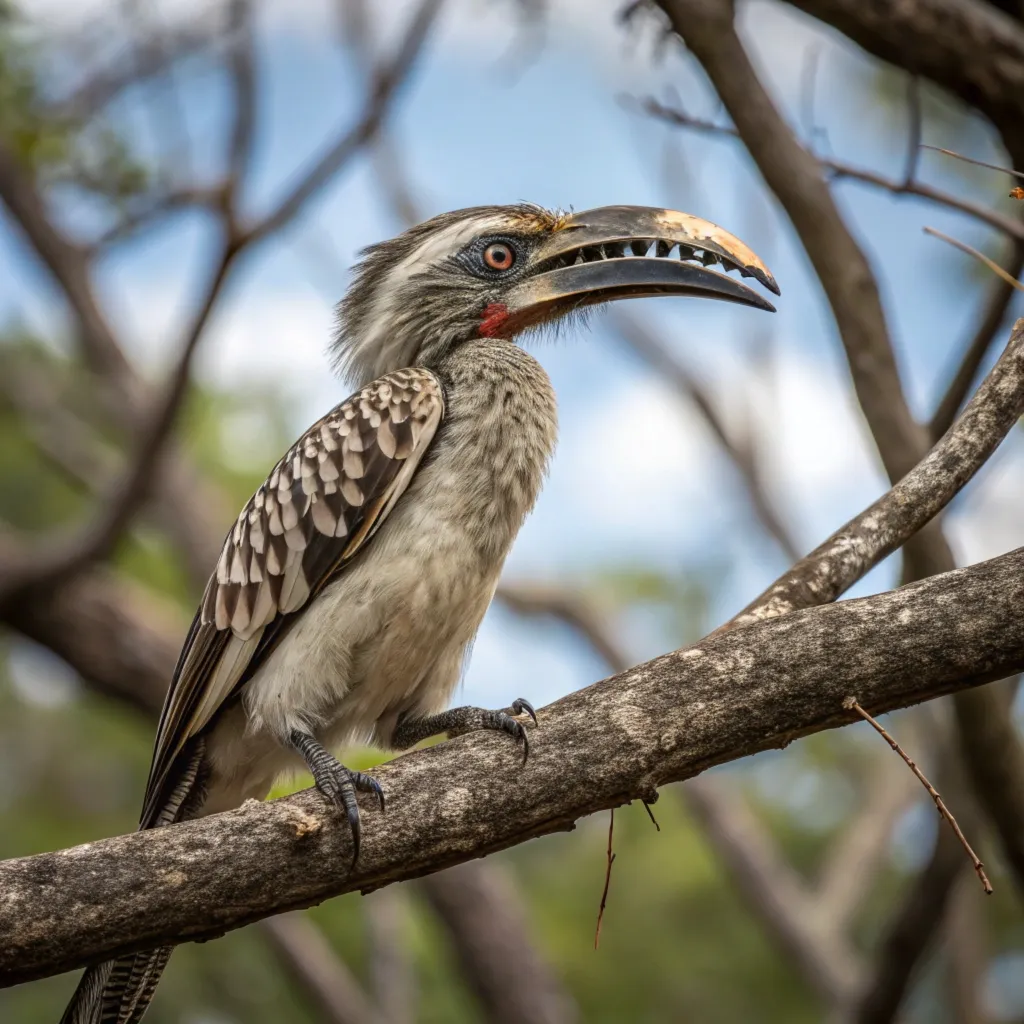
Some birds, notably New Caledonian crows, use their beaks to craft and use tools. These crows have straight beaks with a slight downward curve, which helps them manipulate objects. They can fashion hooks from twigs to extract insects from tree crevices.
This remarkable ability showcases the cognitive capabilities of birds and the versatility of their beaks. It also highlights how beak shape can influence and enable complex behaviors.
Toolmaking beaks represent the pinnacle of beak versatility. The ability to manipulate and create tools demonstrates not only the physical adaptability of beaks but also the cognitive flexibility of certain bird species. This capacity for tool use blurs the lines between innate adaptations and learned behaviors.
The toolmaking abilities of New Caledonian crows and other birds challenge our understanding of animal intelligence and the role of physical adaptations in enabling complex behaviors.
FAQs About Bird Beaks
How do bird beaks grow and repair themselves?
Bird beaks consist of a bony core covered by keratin, the same protein in human fingernails. The keratin layer continuously grows and wears down through use, maintaining the beak’s shape and function.
Can a bird’s beak shape change during its lifetime?
While a bird’s basic beak shape is genetically determined, slight changes can occur due to diet and use. Some birds, like crossbills, may experience wear patterns that enhance their beak’s functionality over time.
Do all birds use their beaks for nest building?
Most birds use their beaks in nest construction, but the extent varies. Some weave intricate nests, while others merely arrange materials. A few birds, like megapodes, use their beaks minimally in nesting, instead building mounds with their feet.
How do birds with different beak types drink water?
Most birds scoop water with their lower beak and tilt their heads back to swallow. Pigeons and doves can suck water directly, while some seabirds have glands to excrete excess salt, allowing them to drink seawater.
Can birds taste food with their beaks?
Birds have fewer taste buds than humans, but they can taste with their beaks. Taste buds are located in the back of the mouth and on the tongue. The beak itself doesn’t contain taste buds but plays a crucial role in food selection.

Joyce is the passionate founder of Chirping Hearts, a website dedicated to sharing her love for birds and providing valuable information about avian life. With a background in ornithology and years of experience in birdwatching, Joyce aims to inspire others to appreciate the beauty and diversity of birds. Through her engaging articles and guides, she hopes to foster a community of bird enthusiasts who share her enthusiasm for these incredible creatures. When she’s not writing, Joyce enjoys exploring nature trails and observing birds in their natural habitats.







